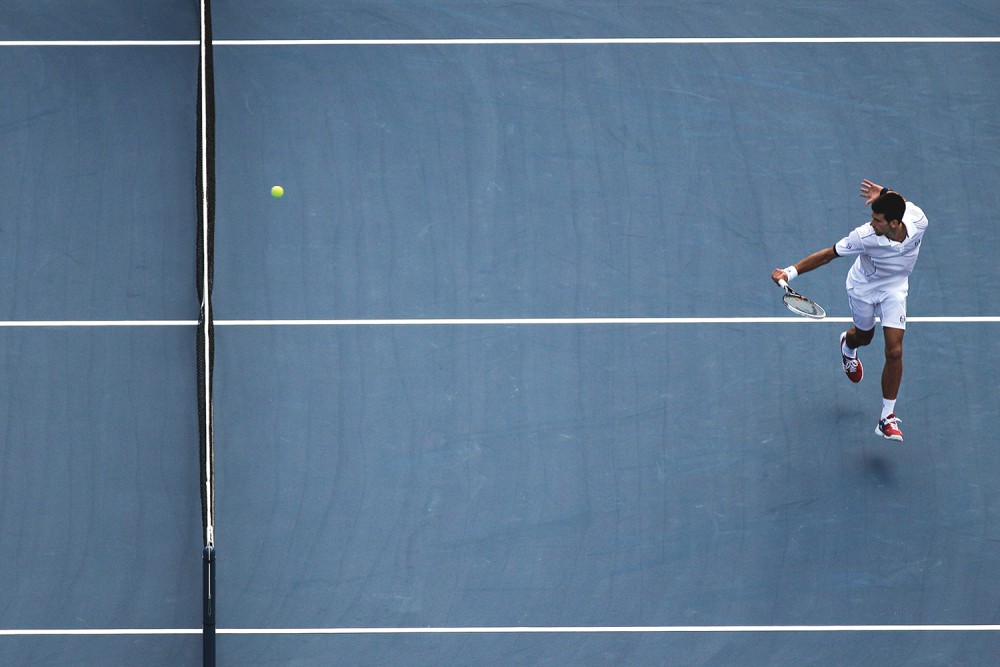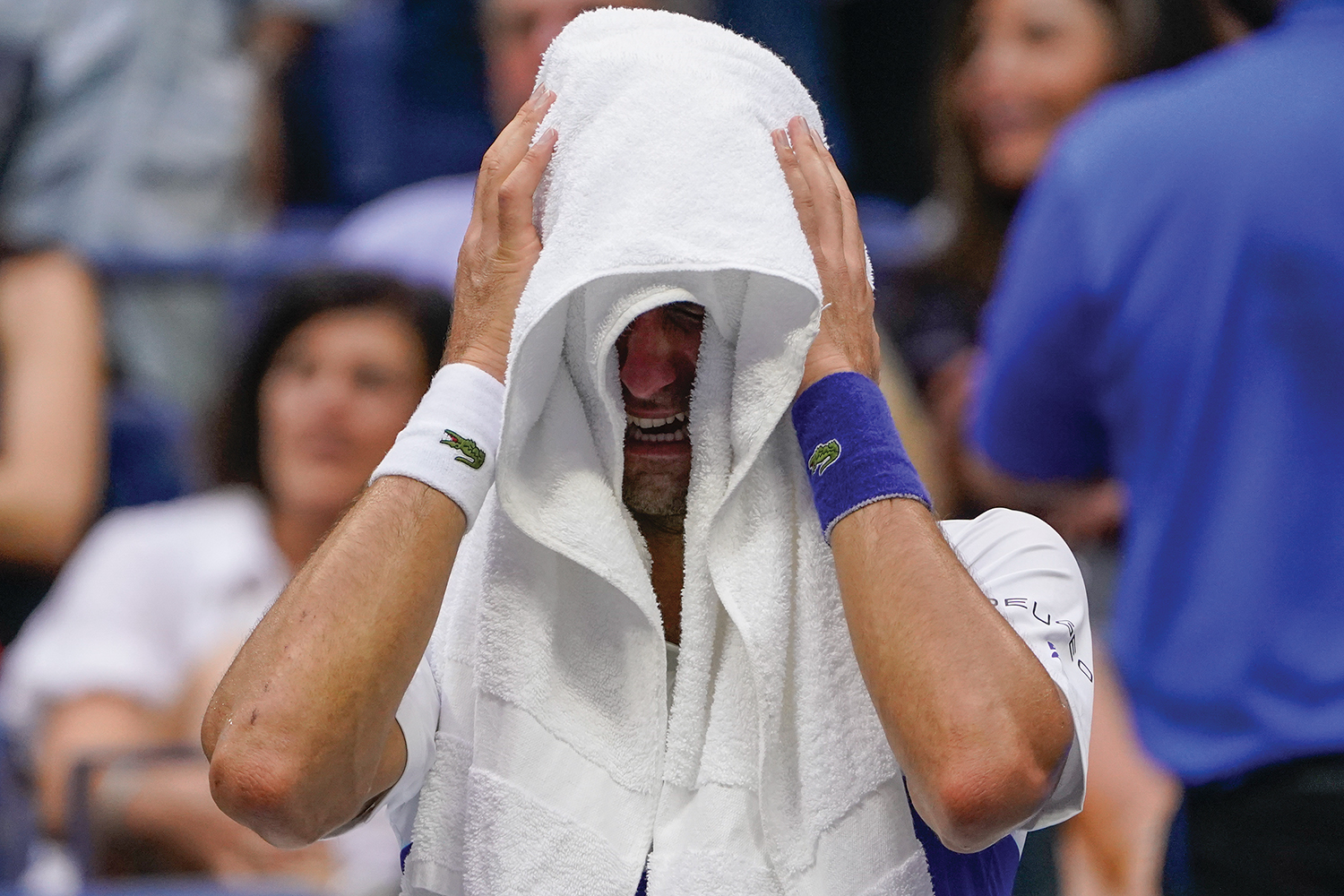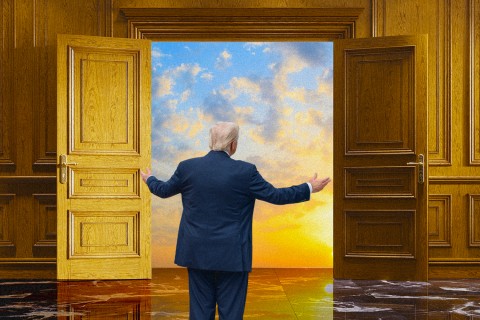Djokovic against the gods
Humans crave stories that create order, whether they’re about the supreme being in the universe or the greatest tennis player in history.

Novak Djokovic, of Serbia, returns a shot during the 2011 US Open tennis tournament in New York. (AP Photo / Charlie Riedel)

Novak Djokovic cries during a changeover in the 2021 US Open men’s singles final against Daniil Medvedev. (AP Photo / John Minchillo)
It’s 2011, and Novak Djokovic, to great fanfare, is about to lose.
The Serb stands one inch tall at the bottom of my friend’s cracked laptop screen. Opposite him, the Swiss great Roger Federer readies himself to serve, his left hand rising as his body arcs into a form as familiar as classical architecture.
Federer’s toss, as ever, is perfect. Up five games to three in the final set of the US Open semifinals in Queens, New York, he is winning the game 30–15, two points away from dispatching Djokovic and giving the crowd what it desperately wants: a storybook final between Federer and his consummate rival, Rafael Nadal of Spain.




